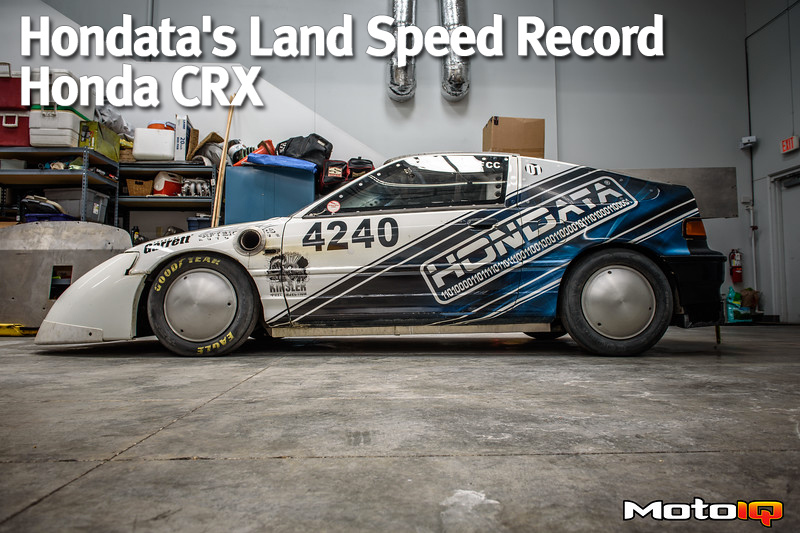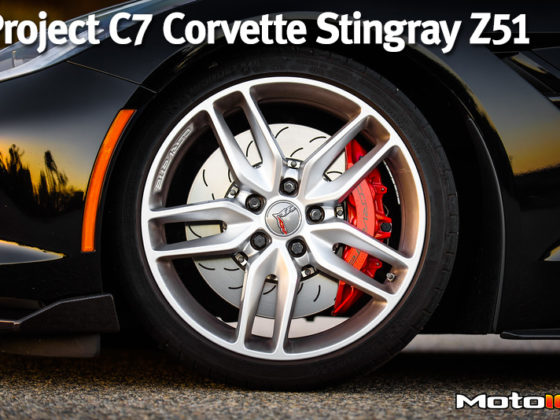
Hondata's Land Speed Record Honda CRX
A lot of armchair racers like to comment on Land Speed Racing saying things like “how hard could it be to go 200 mph at Bonneville, it's a big flat dry lake, all you have to do is floor it” or “I can almost go that fast down the freeway with my Civic with a turbo kit”. Well, all we have to say about that is to go try and find out just how good you are if you think you can.
Imagine trying to get up to speed on what is basically a dirt road, at high altitude, at high temperatures with a real timing system, not rice lies. Try dealing with high-speed aerodynamics that are limited by rules and see what the forces of nature want to do to make you spin out and flip. If you do, imagine the violence of crashing at that speed. We have been to Bonneville and have experienced it all first-hand. It is difficult, technically challenging and dangerous.
It is especially difficult to do well in Land Speed Racing's Production car classes. You have to deal with non-optimal body shapes with limits set by rules on what you can do aerodynamically to correct issues with stability. Spins and blow-overs can happen and if the car does roll, it is savagely at high rpm which is deadly for the driver.
Land Speed Racing isn't for pussies. Knowing this, the folks at Hondata have been campaigning and refining their record holding Competition Coupe Honda CRX for many years. Since they are just down the street from us, we figured it was high time for us to take a close look at their car.
The 1990 CRX started life as an RHD JDM SiR model. This chassis was chosen because it is sold as a 4 seater in Japan. The US version is a two seater, and to be legal in the Competition Coupe class, the car has to be able to seat 4 adults in stock configuration. Thus, the Japanese model is legal for the class, but the American one is not. In 2007, this particular CRX began its journey with the Hondata team as a Land Speed Racer.

In this case, the Hondata CRX is running a highly modified K20 engine with both a turbocharger and Nitrous oxide injection. The K20 engine's block features Darton Sleeves and an 87.5mm bore. The crank is stock, but the rod journals are widened for ACL F20 width rod bearings. The main bearings are also by ACL.

The 11:1 compression forged CP pistons have Embee thermal barrier coating on the domes and low friction coating on the skirts. The CP pistons are hung on super strong 4340 high nickel alloy Cunningham Rods with 200,000 psi H11 tool steel bolts. The cylinder heads are stock with stock valves that are fortified with Drag Cartel cams and Eibach dual valve springs with ti retainers.
A Cometic o-ring head gasket keeps things sealed with high boost and nitrous pressure, and the engine is pinned together using ARP H11 tool steel fasteners. Although the engine is built stoutly, it is not esoteric or exotic by any means. This engine could easily be duplicated by nearly anyone.

The twin scroll 321 stainless header helps harness pulse energy to help spool the huge turbo. The manifold is shrouded with Inconel heat shields and feeds the exhaust gasses to a huge Garrett GTX4202R. This turbo features a billet compressor wheel with a 76mm inducer and a 102mm exducer and the latest GTX aero for optimal efficiency. The forged CNC-machined billet wheel has the strength to thin out the hub and fins, further improving aero efficiency.
The compressor wheel sits in a .60 A/R ported shroud housing which extends the surge margin. This is an important feature when a big turbo is used on a relatively small displacement engine with nitrous spool assist. Big compressor flow numbers being spun up by nitrous can exceed the engine's swallowing capacity at lower rpm and cause surge. This is where the ported housing can greatly help.
The temperature resistant Inconel Turbine wheel has an 82mm inducer with a 75mm exducer and is paired with a high flow 1.01 A/R turbine housing. This is a huge turbo for a 2 liter engine. For example, the turbo on Dai Yoshihara's 7 liter Formula Drift engine is only slightly bigger.
To minimize friction for the fastest possible spool, for long life and thrust load resistance at high boost levels, the center section feature dual row ceramic ball bearings with the option to liquid cool the center section. Keeping the center section cool is critical for land speed racing where the car can be at a heat soaking full throttle for several minutes. This makes for a very tough environment indeed, perhaps the toughest on the turbo motorsport in the world.
The GTX4202R pumps 42 PSI of boost pressure into the K motor, and when supplemented by the Nitrous Express nitrous system produces an estimated 1040 hp at 9300 rpm and 550 lb/ft of torque at 7000 rpm.



